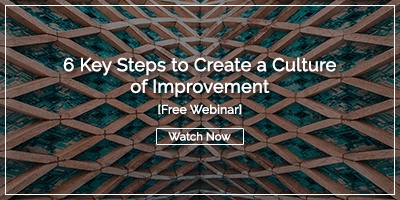 In Japanese, the word Kaizen means "good change." It describes the continuous improvement of all functions of an organization across the entire hierarchy.
In Japanese, the word Kaizen means "good change." It describes the continuous improvement of all functions of an organization across the entire hierarchy.
Kaizen's guiding philosophy is simple: operations can always be made better, even if they are functioning at an acceptable level for the moment. In addition, all problems are recognized as opportunities to improve.
Of course, creating a culture driven by Kaizen thinking is easier said than done. Fortunately, some simple yet powerful ideas can shape how team members think. Embracing these ideas makes improvement inevitable.
1. Start by questioning the best practices
It is easy to try to justify the past. All cultures have some tradition and system designed to show respect for elders and carry over certain practices from generation to generation. There is value in learning from the past, but too often, old ways of working become an excuse for the status quo. For Kaizen to happen, everyone must be ready to challenge the current operation respectfully and curiously.
2. Keep your mind open to change
Once you develop the skill of questioning the status quo, the next step is opening your mind to changing it. As individuals, we often have fixed ideas about how to do things and what is most important. Habits are hard to break even when you know there is a better way. Any change can feel like a risk. Try asking yourself what would happen if you saw things from the opposite point of view? Can you make an argument for doing something in a completely new way? These mental exercises can help open your mind to change.
3. Reframe problems as opportunities
People are unlikely to shout, "That's great!" when they come across a problem, but that's precisely what Kaizen thinking is all about. The first step to positive change is recognizing something that could be made better. Waste is a good example. All identified causes of waste are opportunities for improvement.
4. Enjoy resistance. It makes you stronger.
If you want to build strength at the gym, you use more and more resistance in the form of weight against your muscles. As the challenge gets more difficult, your body changes to overcome it. The same is true when your organization faces challenges. Continuous improvement requires developing more and more wisdom. With each challenged face, your team's knowledge, experience, understanding, and insight grows. Therefore, hardship represents the most significant opportunity for growth. People aren't born with wisdom. They earn it.
5. Practice positivity
Kaizen is a fundamentally optimistic philosophy. Negative thinking is the fastest way to kill a culture of improvement. No matter how difficult the challenge, it should be met with statements that include words like "can" and "will."
6. Eliminate excuses
There's always a reason not to improve. It may be risky; perhaps it won't work, the improvement may be too small, changing the process may hurt someone's feelings, etc…. On and on. Kaizen demands shifting that energy away from excusing the current situation into looking at things from a different angle.
7. Don't throw money at problems
No doubt, some improvements require capital, but spending money or hiring people should not be the first line of defense. The most successful teams use creativity, innovation, and experimentation to make improvements before reaching for the checkbook. In fact, cash-strapped organizations have an even greater imperative to practice Kaizen.
When people's ideas are the basis of change, they are more motivated to make them successful. That's why no amount of money can overcome the cultural toxins of disengagement and distrust.
8. Seek the wisdom of many
While one person's specific knowledge is precious, no one person can understand a problem from every angle. The more points of view you understand, the closer you get to the truth. Every process has inputs, operators, and customers. All should be considered when looking for opportunities for improvement.
9. Make decisions based on data
One of the most important decisions you can make when implementing a change is how the results will be measured. What metrics can be applied to understand the current situation? What level of change will indicate a meaningful improvement? How will those results be tracked over time? These are the questions that will determine success. Using data to guide what you do will help overcome resistance to change, eliminate assumptions, and de-personalize criticism of the status quo.
10. Practice validated learning
In Japanese, learning by doing things is called "Genchi Gembutsu." In other words, you can't learn to swim by reading 1,000 books about how to swim; you have to get in the water. Will you make mistakes? Absolutely. That's why you will control your experimentation by paying attention to the data. If you try something that doesn't work, you'll know and adjust quickly.
11. Look for simple, incremental solutions
Those who practice Kaizen seek perfection, but not all at one time. If you have to choose between a simple, small fix or a complex soup-to-nuts overhaul of a process, pick the simple change. Small wins are highly motivational, quick to implement, and less likely to disrupt outcomes. Once your team is comfortable with incremental improvements, bigger projects can be considered. In short, don't let the perfect be the enemy of the good.
How you and your team think about your organization's challenges is what will determine success. Embracing these Kaizen ideas is the first step on your journey toward a better future.




Add a Comment